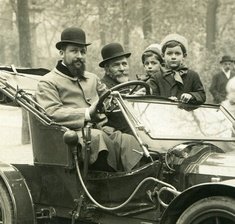Featured Quizzes
User Quizzes
Create Quiz
Data and Charts
Badges and Games
About JetPunk
JetPunk Shop
Dark Mode

Industrial Revoltion Study Guide
Part One - Britain's Demographic Transition
Rate:
Last updated: February 29, 2024
You have not attempted this quiz yet.
More quiz info >>
| First submitted | February 29, 2024 |
| Times taken | 19 |
| Average score | 55.6% | Report this quiz | Report |
5:00
The quiz is paused. You have remaining.
Scoring
You scored / = %
This beats or equals
% of test takers
also scored 100%
The average score is
Your high score is
Your fastest time is
Keep scrolling down for answers and more stats ...
1.
What was the primary demographic transition experienced by Britain in the first quarter of the 19th century?
From primarily rural to primarily urban population
✓
From primarily urban to primarily rural population
✓
2.
Which of the following statements accurately describes the population growth in Britain during the 19th century?
Population declined due to urban migration
✓
Population remained stable throughout the century
✓
Population doubled from 1820 to 1880.
✓
3.
Which English cities' population doubled in the Industrial Revolution?
Birmingham & Sheffield
✓
London & Manchester
✓
Liverpool & Manchester
✓
Birmingham & Liverpool
✓
4.
Which English city's population MORE than doubled?
London
✓
Manchester
✓
Liverpool
✓
Birmingham
✓
5.
From 1815 to 1914, the English population grew very quickly. By 1820 it was 12 million people. By 1880, how big was the English population?
35 million people
✓
30 million people
✓
18 million people
✓
24 million people
✓
6.
In 1900, how many people lived in England?
18 million
✓
60 million
✓
30 million
✓
24 million
✓
7.
The city of Manchester was known as the '___ Queen'?
Steel
✓
Cotton
✓
Wood
✓
Steam
✓
8.
What were some of the consequences of overcrowding in industrial cities like Manchester?
Improved living conditions for workers
✓
Decreased infant mortality rates
✓
Pollution, overcrowding and poor housing standards
✓
9.
What were the biggest industrial centers in Britain?
The Northwest and Northern Midlands (England), South Wales, and around Glasgow (Scotland)
✓
The South and the Midlands (England), South Wales, and Glasgow (Scotland)
✓
The Northwest and Southern Midlands (England), South Wales, and London (England)
✓
Comments
No comments yet
New and Popular
Save Your Progress
Copyright H Brothers Inc, 2008–2024
Contact Us | Go To Top | View Mobile Site
